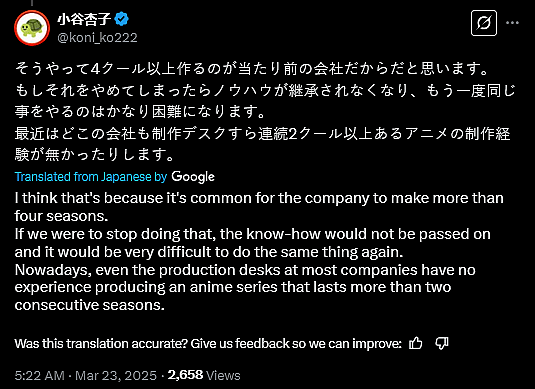‘Gundam’ Franchise Animator Says Shorter Anime Seasons Due To “A Shortage Of Professional Staff”, Reveals Studios Turning To Social Media For Help

Where once a given anime season would present audiences with upwards of 20 episodes, more recent productions have seen their average episode counts dropping to the point where many end up with single-digit runs – and according to veteran Mobile Suit Gundam franchise animator Kyōko Kotani, the reason for this change is, simply put, that the Japanese anime industry is currently experiencing a severe workforce “shortage” across the board.

Kotani, whose credits include stints as the Animation Director for the 2015 take on Jojo’s Bizarre Adventure: Stardust Crusaders and as a Key Animator on such series as Spy X Family, My Hero Academia, and the Mobile Suit Gundam outings 00, Iron-Blooded Orphans, and Witch from Mercury, offered this insight into the current state of her industry via a series of posts made to her personal Twitter account.
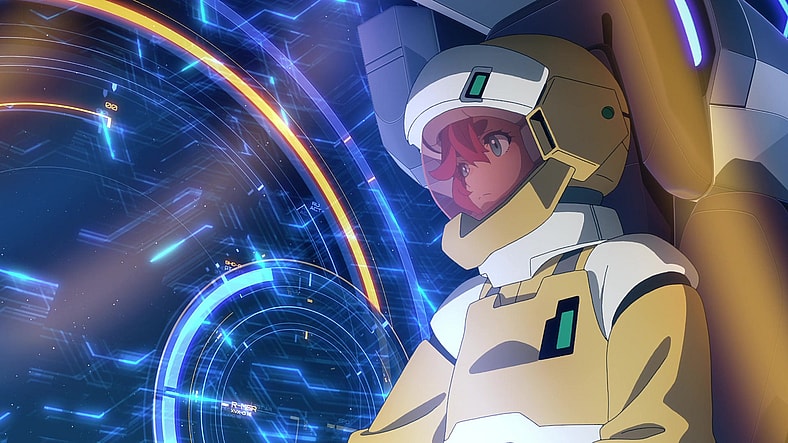
Taking to the social media website on March 23rd, the animator, seemingly apropos of no specific incident in particular, publicly spoke to the fact that “For quite some time now, television series have been expected to meet the same high quality standards as theatrical films, making production increasingly difficult.”
“Additionally, there is a shortage of professional staff across all sections relative to the total number of works being produced, which makes it difficult to produce and air two consecutive cours (seasons),” she added, per a machine translation of her statements provided by ChatGPT. “Even if staff are secured for a year, only one cour can be made.”
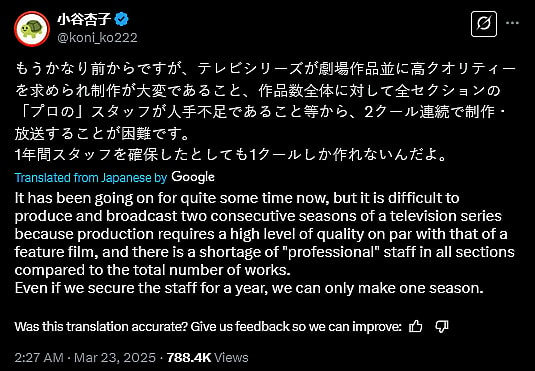
“Actually, I think it was crazy that, until about 10 years ago, everyone worked through Sundays, pulling all-nighters, making an episode in about two months, and immediately airing it,” recalled Kotani in a follow-up post. “Now, the shortage of staff is even worse than back then, so while it’s still common for people to work through Sundays and pull all-nighters, it’s even more intense!”
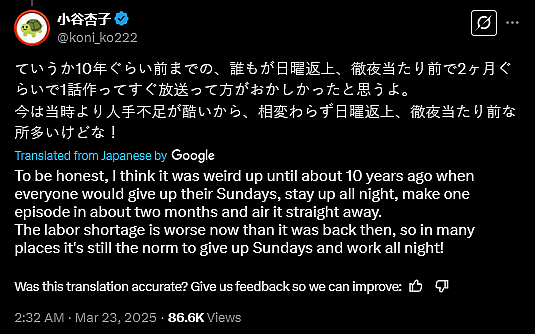
Met with the observation from one of their Japanese followers that “Even though there are people available, there aren’t enough professional workers”, especially in light of artists “not wanting to incorporate AI operations”, the animator clarified, “It’s not just that there are people available, but especially a shortage of animators who can do layouts and key animation (since this is the initial stage of creating the visuals for commercial animation, if this part can’t be resolved, nothing can move forward).”
“As a result, on platforms like Twitter and other online spaces, amateurs and beginners are being asked to work,” she continued. “This is just because reference materials need to be prepared for dubbing (adding sound effects), so they’re being asked for that task. Of course, the level isn’t good enough for broadcast, so the animation directors and supervisors have to redo all the drawings and the timing sheets. This takes up a lot of time.”
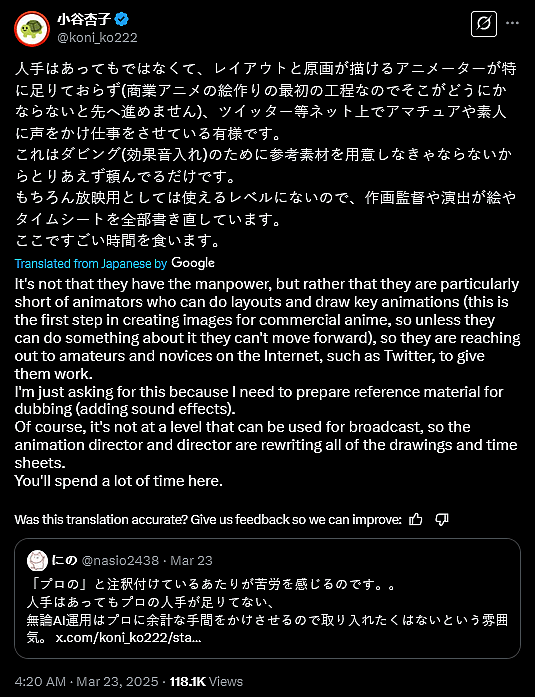
Turning to address said follower’s point regarding AI, Kotani then explained, “Generative AI is problematic both in terms of copyright issues and in terms of the animation production process, so using it is really impractical.”
“There was one time when, for a project set in modern Japan, the original drawings were fed into AI, and the AI-generated backgrounds were delivered,” she noted. “The perspective guide ended up being turned into a wall, and the cityscape became buildings from medieval Western architecture—it was really terrible. Of course, it had to be redone.”
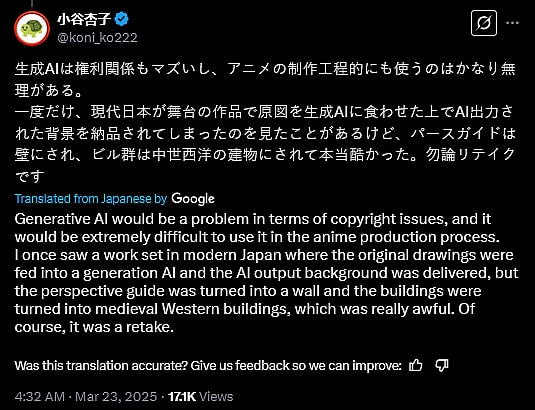
Offering a final clarification on the entire matter, when pressed by another follower as to how Toei Animation is able “to produce consecutive TV anime year after year?”, Kotani asserted, “I think it’s because they’re a company where making more than four cours (seasons) is the norm.”
“If they stopped doing that, the know-how wouldn’t be passed down, and it would be really difficult to do the same thing again,” she detailed. “Recently, even at most companies, production desks often don’t have experience working on anime that involve more than two consecutive cours.”
